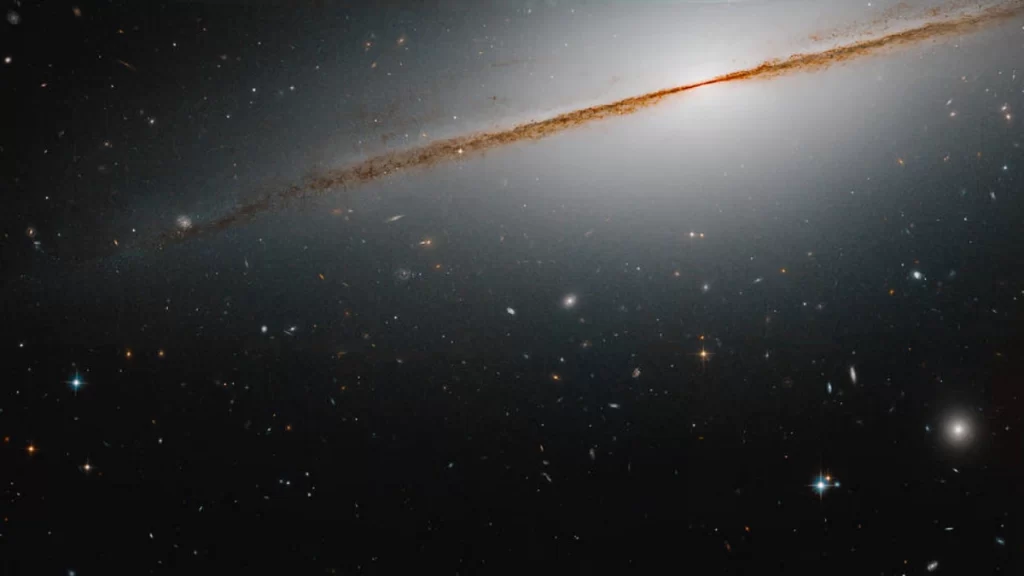NASA’s Hubble Space Telescope Shares Edge-on View of Little Sombrero Galaxy Located 40 Million Light-Years Away
On its official Instagram handle, the Hubble Space Telescope shared a photo of the Little Sombrero galaxy, also known as NGC 7814 or Caldwell 43. Set against a background of more distant galaxies, Little Sombrero is approximately 40 million light-years away from Earth, 80,000 light-years wide, and billions of years old.

Astronomers can now see galaxies of all shapes and sizes from nearly every angle, thanks to NASA’s Hubble Space Telescope. The mesmerising perspective of a galaxy seen edge-on reveals a dazzling slice of the universe. One such galaxy is the Little Sombrero, also known as NGC 7814 or Caldwell 43. On its official Instagram handle, the Hubble Space Telescope shared a photo of the galaxy. Set against a background of more distant galaxies, the Little Sombrero has a bright central bulge, a thin disc of dust, and a glowing halo of gas and stars that extends into space.
The Hubble Space Telescope captioned the image, “Hats off to you, Little Sombrero Galaxy! Also known as NGC 7814, this beautiful galaxy shines in a new view from Hubble.”
It was also stated that NGC 7814 was approximately 40 million light-years away from Earth, 80,000 light-years wide, and billions of years old.
In the image, we can see the edge-on galaxy with a distinct dust lane extending from the upper right to the middle-left. The scene is also dotted with many distant galaxies.
In a blog post, NASA stated that the image of the Little Sombrero was a composite of visible and infrared observations taken by Hubble’s Advanced Camera for Surveys in 2006. The observations were made to help astronomers study the galaxy’s stellar populations and shed light on the evolution of this and other galaxies like it.
NASA had stated in another blog post a few years ago that NGC 7814 had a bright central bulge and a halo of glowing gas that extended out into space. The dusty spiral arms appeared as dark streaks. They were made of a dusty material that absorbed and blocked light from the galactic centre.
The dusty spiral was named after the larger-looking Sombrero galaxy, which looks like a broad-brimmed Mexican hat. The Sombrero galaxy is 28 million light-years away and appears larger than the Little Sombrero when viewed from its edge. Though they are nearly the same size, the Sombrero appears larger because it is closer.



